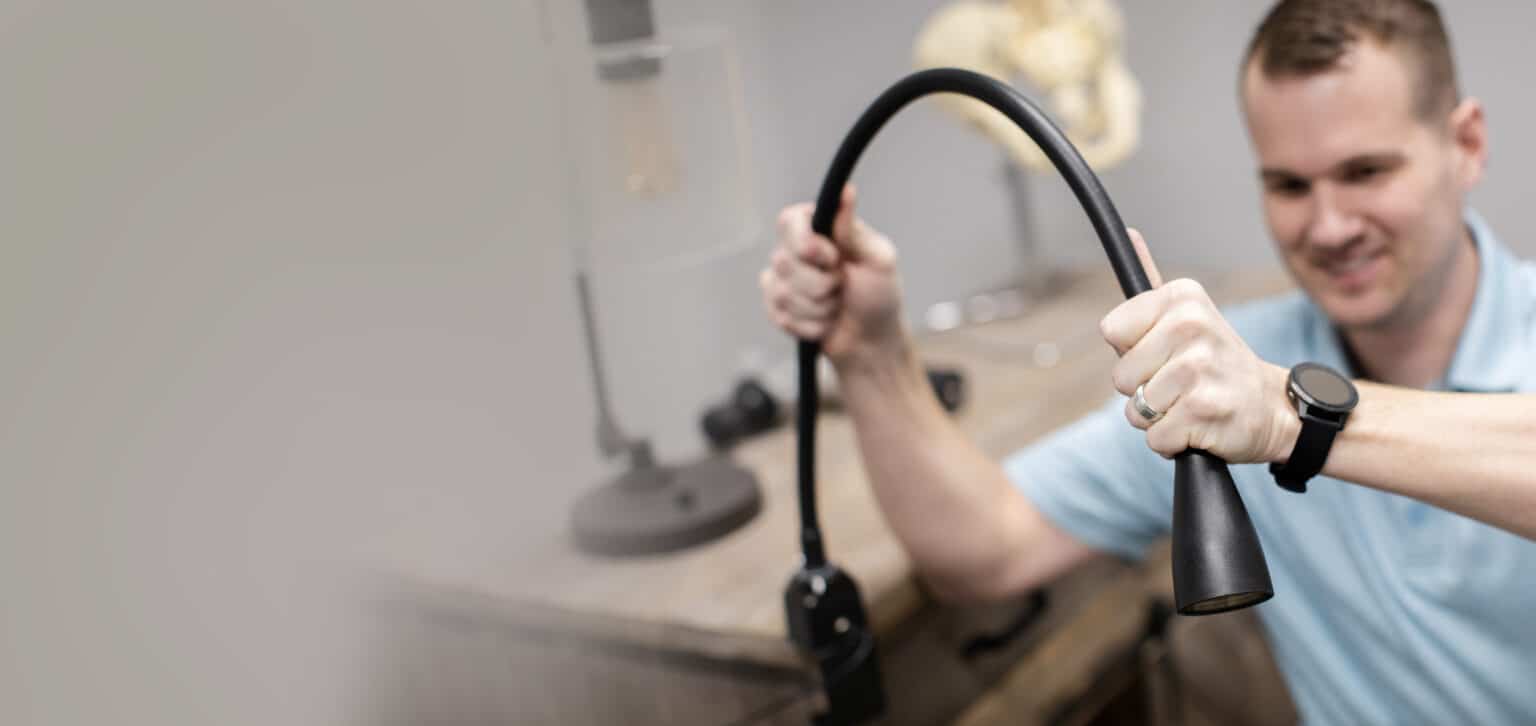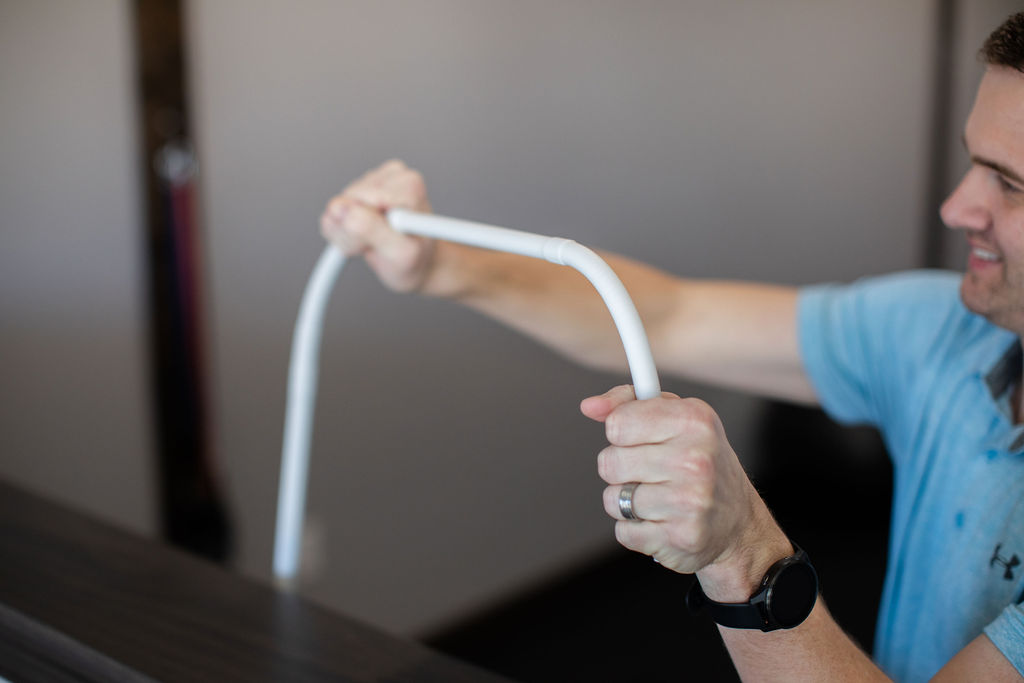How do I know my flex arm will work correctly? Preventing drooping and spring-back damage on flex arms

Share:
Your medical device needs to perform at the same high level every time someone uses it. While flex arms are surprisingly sturdy and durable, some issues can come up when they’re used incorrectly. The problem? Spring-back and drooping can compromise an otherwise great product and make it less effective.
You need to know that your product will work consistently and that you won’t have to deal with customer complaints and returns or replacement costs. Here’s how to treat, handle, and utilize flex arms, minimizing drooping and spring-back during the normal usage of your device.

What is spring-back?
By nature, a spring has a tendency to return to a straight or neutral position. Wedging a second wire between each spring coil is what creates a flex arm and gives it the ability to resist that tendency to straighten out. Spring-back occurs when an arm is bent into a position, but the spring moves back toward straightThe problem happens when you bend a spring down to an overextended position and the spring wants to straighten itself out (for more detail, read our article on how flex arms work).
That combination of forces can lead to the spring back phenomenon. This is essentially when you try to move your flex arm into its position, but the spring overpowers it enough to make it go back just a little bit. Usually this tends to happen or be exaggerated when you bend the arm to an extreme position or or put it under a lot of tension, like trying to get it into a tight radius. If you’re having trouble imagining what can cause this, picture an extreme bend to a flex arm, almost like a kink in the hose. When that arm is bent back to a “normal” position it may experience spring back and won’t be able to hold its positioning.
What is drooping?
Drooping is what it sounds like, your flex arm will droop and be unable to hold its weight. In some cases, a flex arm may droop over time. There are a few reasons for this, but the biggest is usually because of the weight on the payload end of the device. We recommend flex arms for devices that only need to support three pounds or less – as you start to approach that weight limit, your device may be more prone to drooping. That’s because of the strain put on the wire inside the flex arm.
There are a few other reasons for drooping which we will cover in a second. Suffice to say, drooping is bad.

Can a flex arm experiencing some drooping or spring-back still ‘work’?
The short answer? Yes. A flex arm experiencing drooping or spring-back is still effective, though the effectiveness of it will obviously be compromised. We liken it to when you dent a soda can. You may be able to get the general shape of it back in place, but its strength will be permanently compromised. In some situations with a flex arm, this is OK – but in most other cases that will require a replacement part. So how can we prevent these issues?
Are our flex arms tested for drooping and spring back?
Yes, both Moffatt flex arms AND our suppliers test a certain number of flex arms per batch (based on discussions we have with you during the prototyping process) to ensure that you’re getting quality flex arms shipped to you. If, for some reason, a flex arm isn’t performing up to our standards, we will make sure that you’re supplied with ones that do.
How to prevent drooping and spring back in flex arms
While there may not be much you can do AFTER a flex arm has exhibited drooping or spring-back, there are preventative measures you can take to make sure that your flex arm stays in tip-top shape. Here are a few ways we recommend using them
Do not overbend the arm
Flex arms are extremely, well, flexible. That doesn’t mean that you can’t overbend them. So how do you know you’re bending it too far? The arm will tell you. If you’re struggling against the arm to bend it past where it feels like it should go – then you’re probably bending it too far. When you bend it back to its “normal” resting position, you may notice some droop or spring back.
Make sure your cycle testing mimics realistic use
In some cases, we see folks cycle testing our arms too fast. Our flex arms work using friction. When you adjust them, you’ll cause them to heat slightly. If you cycle test too quickly, it could heat up the flex arm to the point that it weakens the arm, and drooping may occur. When you start to cycle test your arms, communicate with us as to your process and goals, and we can make sure we come up with a procedure that works without damaging your arms.
Make sure you have the right end fitting
Maybe your device needs to be able to swivel back and forth. Instead of bending the flex arm itself at the base (which could create some instability), we can work with you to find an end fitting that will provide that range of motion without compromising stability.
Do you have more questions on how a flex arm might integrate into your next medical device? We’d love to talk about it and throw some ideas around.
